Recently, the Paul Rubens 4th generation watercolors were launched.
And the major selling point is that most of paints in this generation contain single pigments.
In case you don’t know, single pigment paints are pure in composition, thus making them very easy to mix with other paints.
That means mixtures remain clean, luminous, and vibrant. For this reason, single pigment paints are ideal for watercolour artists of all skill levels.
With a majority of the paints containing single pigments, Paul Rubens promises that the 4th generation contains the highest-quality paints they’ve produced to date.
But does this new generation of artist grade paints actually live up to this promise?
Find out the answer as I break down the pros, cons, and my overall impressions of the 36 set of tube paints that were generously sent to me by Paul Rubens.
Without further ado, let’s get started!
DISCLOSURE: This page contains affiliate links.
Table of Contents
Paul Rubens 4th Generation Watercolors: 5 Key Features
To start, let’s have a look at the basic features of the Paul Rubens 4th generation watercolours.
First, each tube is 5ml.
Even though the tubes are small, they are mighty. When activated with water, a little bit of pigment goes a long way. That means you’ll probably paint with these tubes for a long time.
Second, the majority of the pigments in these paints are single pigments.
Since most of the paints contain single pigments, colour mixing is easy to achieve.
In this way, you don’t need to worry about conflicting pigment properties that may accidentally produce muddy colours or dull, lifeless mixtures.
Third, these 4th generation paints have great luminosity and vibrancy.
The paints are made of fine gum Arabic, which helps them maintain good lightfastness.
As well, they are resistant to weather conditions such as heat, sunlight, dampness, etc.
Fourth, these Paul Rubens paints have good transparency ratings.
The pigments are made of primary toner materials to ensure that transparency is maintained.
Last, the paints are presented in beautiful packaging.
The watercolour tubes are packaged in a lovely black box in which each tube is secured in its own spot. This makes the set perfect for gifting to friends and family (or maybe even yourself)!
Speaking of packaging, let’s have a look at the sets that are available for purchase.
Characteristics of the 36 Paint Set
The 4th generation of Paul Rubens paints are available in two different sets. The first is a 24-paint set, and the second is a 36-paint set.
The 24-paint set is smaller and thus more limited in its colour selection. Because of this, it offers a lot of opportunity for colour mixing so that you can manually mix any colours that are missing from the set.
On the other hand, the 36-paint set is perfect for watercolour artists who love variety and versatility.
Since I have the 36-paint set, let me take a minute or two to mention the strengths and unique characteristics of this set.
First of all, the 36-paint set offers a wide selection of yellows and reds as well as blues and greens. This variety provides a lot of opportunity to mix different tertiary colours.
Moreover, 25 out of 36 paints are made of single pigments. I love this quality because single pigments are better to use for colour mixing.
That being said, one thing to note is that most of the greens in this set are made of 2 pigments.
If this detail bothers you, you can simply mix the yellows and blues to create your preferred greens since the majority of those paints contain single pigments.
So, it’s an easy solution.
One last interesting feature to point out is that there is no white pigment in this set, but it includes Ivory Black.
The lack of Payne’s Gray is a bit unfortunate, but overall, it feels like there are no wasted or unnecessary colours in this set. Now that’s a bonus!
Overall, I’m very pleased with the selection of paints in the 36 set. For my personal tastes and artistic preferences, I enjoy the range of pinks and blues the most.
For instance, have a look at the watercolour galaxy painting below to see how I blended the Paul Rubens paints together to create a loose but vibrant galaxy.
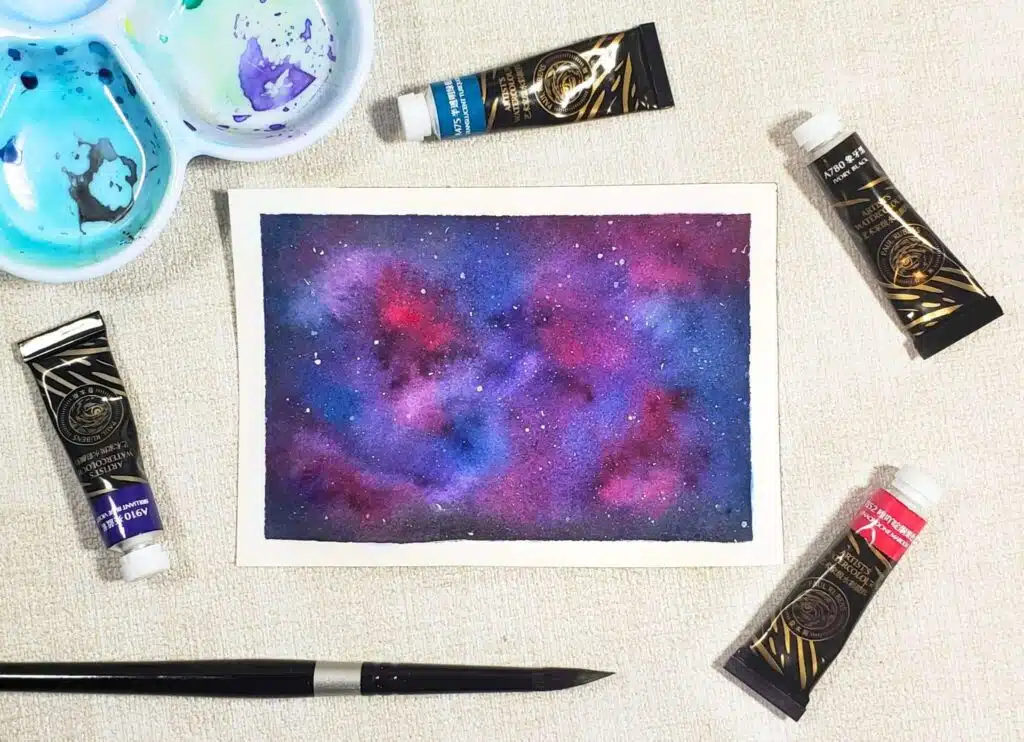
Packaging and Unboxing
When I took the box out of its plastic wrapping and opened the lid, I was happy to see that all of the Paul Rubens 4th generation watercolors were sitting firmly in their own spots.
What’s more, the black boxing provided a stark contrast to the vibrant colours on each tube. That made them look aesthetically pleasing. It was also easy to identify each colour name.
Fortunately, I had no issues opening any of the tubes. All of the caps came off easily and none of the paints exploded out of the tubes. One or two of the caps were a little stubborn to open, but that didn’t create any issues.
Next, I squeezed a bit of each pigment into empty half pans.
While doing so, I noticed that the consistency of the pigments varied quite a bit.
For instance, roughly a third of the paints (namely the blues, purples, and greens) came out of the tube in a thicker consistency. Due to their thicker consistency, they dried in the pans in the shape of little Hershey Kisses.
Now contrast that with the other two thirds of paints (namely the yellows, oranges, and reds) which maintained a smooth and liquid consistency similar to what you expect of regular tube paints.
To be clear, the difference of consistency didn’t affect the performance of the paints. I just want to point out that the variation in the consistency of paints was a bit surprising.
For a visual reference, have a look at the image below.
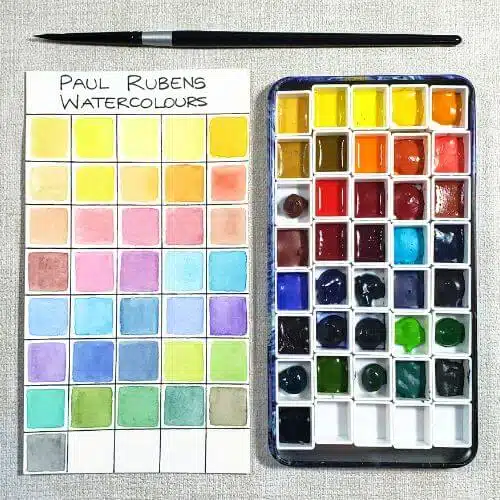
Swatching and First Impressions
For the purposes of this demonstration, I swatched these paints on 300 gsm cold-pressed paper. The paper is made of cellulose, and it’s acid-free.
Upon first glance, I noticed that the pigments were richly pigmented straight from the tube. Excited, I couldn’t wait to see what they looked like once I swatched them all.
I used a round 8 brush to accomplish this task. Swatching each pigment took some time to do since the set is quite large. But the process was easy and straightforward.
So, what are some of my first impressions?
First, a little bit of pigment spread quite easily.
For this reason, I predict that these tubes will last quite some time because a small amount of pigment can cover a lot of space as well as several layers.
This information should pacify any artist who’s worried that the small tubes might not be worth the investment. Indeed, I believe they’re worth it!
Second, most of the pigments have good diffusivity, and it was easy to apply them on the paper.
As you can observe in the image below, the paints bloomed and diffused beautifully into one another while I was experimenting with different blends.
That being said, a couple of pigments such as Venetian Red and Cobalt Turquoise needed additional application to build up the vibrancy.
But other than that, it only took one pass to swatch each of the pigments in this set. They behaved well, so I enjoyed a smooth painting process.
Third, it’s worth noting that I did not encounter any binder separation.
All of the paints were properly mixed and had good consistency.
Therefore, I had no problems squeezing the pigment into the pans or swatching them.
Just make sure that you carefully swatch each pigment and label them because some of them, especially the blues and purples, all look similarly dark when you squeeze the paint into the pans.
Fourth, the pigments appeared luminous and vibrant after they dried.
In fact, all of the pigments dried a little lighter than when they were first laid down. But this is to be expected of watercolours.
In my personal opinion, the colours that stood out to me the most include Quinacridone Maroon, Translucent Turquoise, and Dioxazine Violet.
Lastly, most of the pigments in this set are not granulating paints.
If you’re a watercolour artist who doesn’t like the textured appearance of granulation, then you’ll love these paints.
I’m not the biggest fan of granulating paints, so I was pleased to see a distinct lack of granulating paints in this set.
But if granulation is your style, you’ll probably find this set limiting. It’s something to consider before investing in these paints.
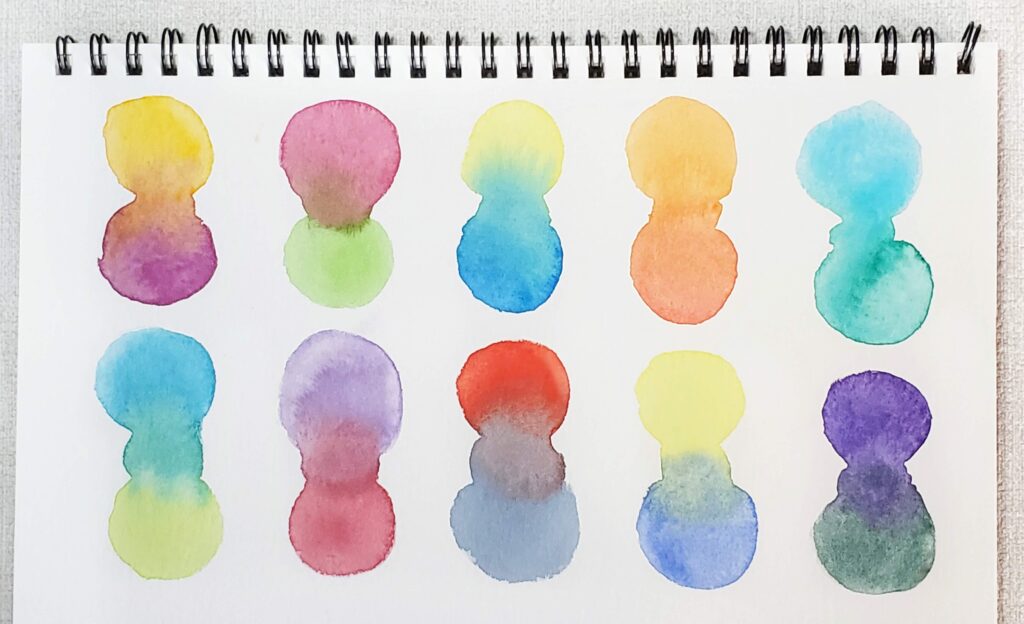
Pigments and Colour Characteristics
As someone who loves to paint celestial galaxies, the cosmos, and sunset skies, I use a lot of cool, vibrant colours in my artwork.
For that reason, I more than likely won’t use the golden paints such as Naples Yellow and Earth Yellow, or the rusty reds such as Venetian Red.
In fact, some of the yellows look too similar for my personal liking.
But that’s just a minor con because overall, I find that the large variety of yellows, reddish pinks, blues, and greens provide excellent variation for all kinds of subject matter.
Other subject matter I enjoy painting are landscapes and botanicals.
However, I find the lack of premixed browns a bit underwhelming since Brown Umber is the only premixed brown in this set.
But that really isn’t a big deal since you have a wide variety of pigments that you can mix to create browns. You just have to be proactive and willing to mix your browns from scratch.
The same argument can be used to highlight the distinct lack of purples in this set.
This isn’t a big problem because the wide selection of red, pink, and blue pigments offers ample opportunity for you to mix many different kinds of purples.
So if you’re not bothered by the lack of purples and browns in this set, and you don’t mind mixing them whenever the need arises, then all 36 colours should appeal to you!
Note: I’ve only owned these watercolour paints for a limited time, so I cannot yet attest to their long-term lightfastness. However, according to Paul Rubens’ ratings, most of the pigments have good lightfastness ratings.
Conclusion: The Verdict
After swatching the pigments and experimenting with this set of 36-paints, I’ve come to some solid conclusions.
Overall, the Paul Rubens 4th generation watercolors is a great investment for any watercolour artist who wants to expand their watercolour paints collection.
In particular, let me summarize the highlights of this set of 36-paints:
- Most of the paints contain single pigments, which results in easy and clean colour mixing.
- The selection of pigments offers lots of variety and versatility in terms of colour mixing.
- The paints are rich, vibrant, and luminous.
- The pigments are transparent and there are no binding separation issues.
- The 5ml tubes hold a lot of pigment; they’ll last you a while.
- The packaging is sophisticated and beautiful.
- The range of reds, pinks, blues, and greens is impressive.
To give you a complete assessment, let me summarize a few cons relating to this set:
- The set has a very limited selection of purples and browns.
- There are no grey paints in this set.
- This set may not appeal to artists who enjoy painting with granulating paints.
Now that you’ve learned about the new Paul Rubens 4th generation watercolors, you’re ready to invest in them!
So, the next step is to check them out here:
- Paul Rubens 4th Generation Artist Watercolor Paint Set (US)
- Paul Rubens 4th Generation Artist Watercolor Paint Set (CA)
- Paul Rubens 4th Generation Artist Watercolor Paint Set (UK)
- Paul Rubens 4th Generation Artist Watercolor Paint Set (EU)
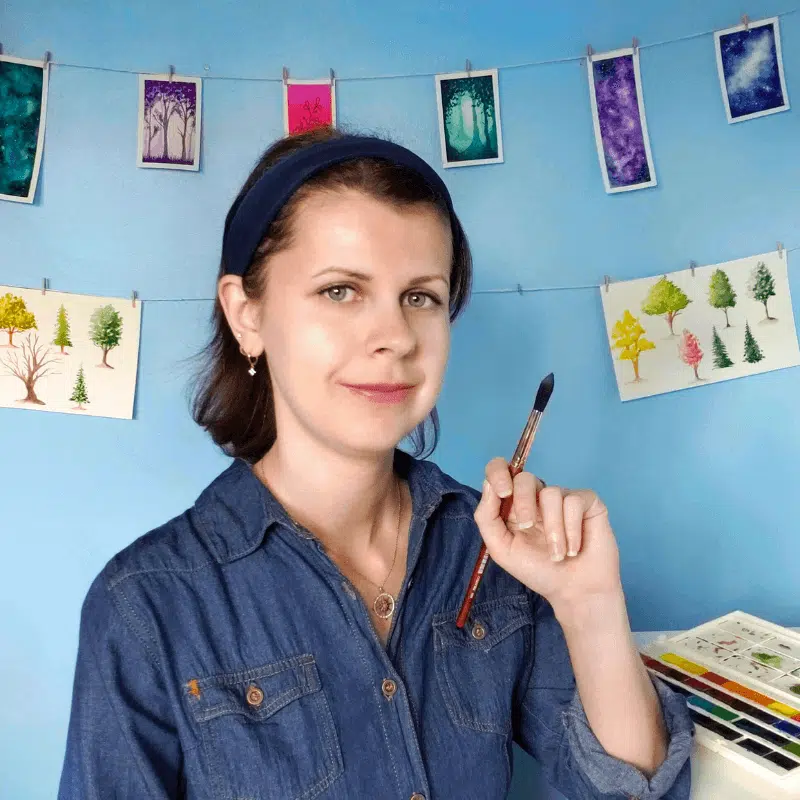
Miranda Balogh
Artist & Online Educator

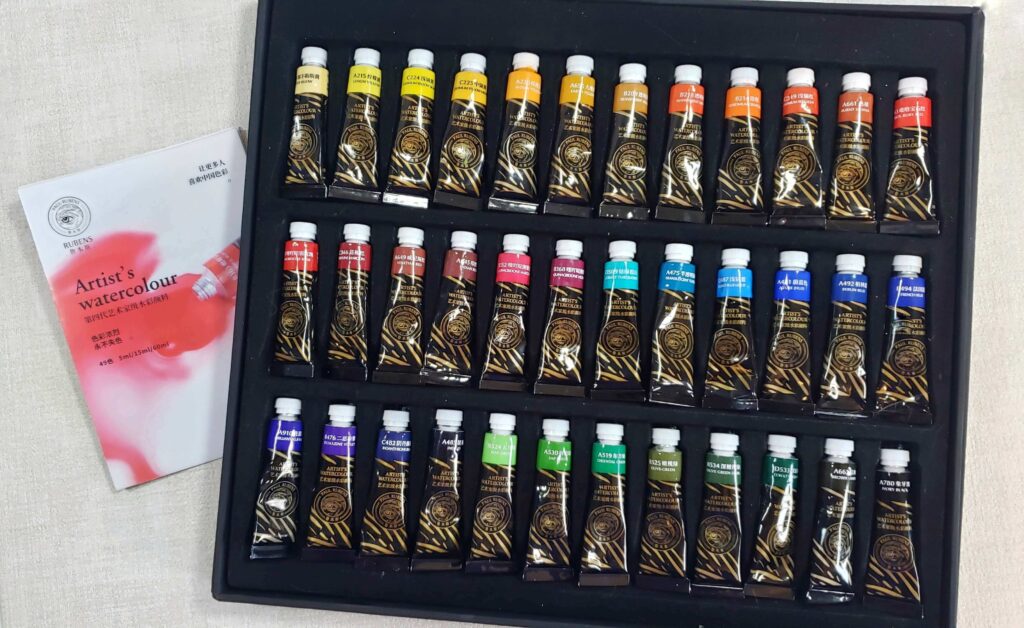
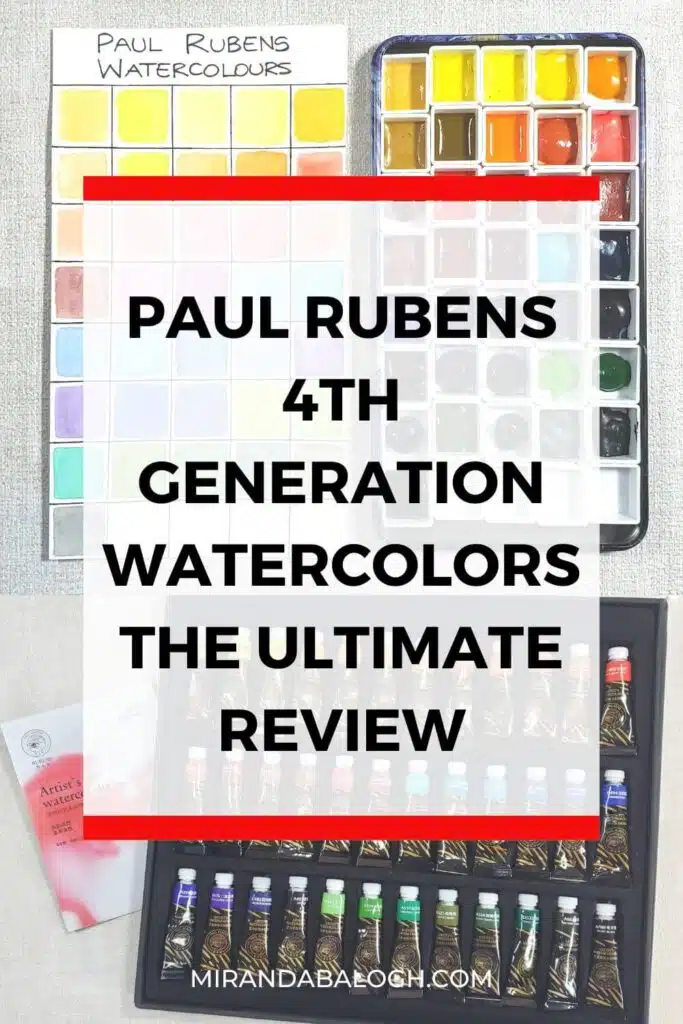




A wonderful explanation of paints!!!
Thank you very much! I’m glad you enjoyed this article.